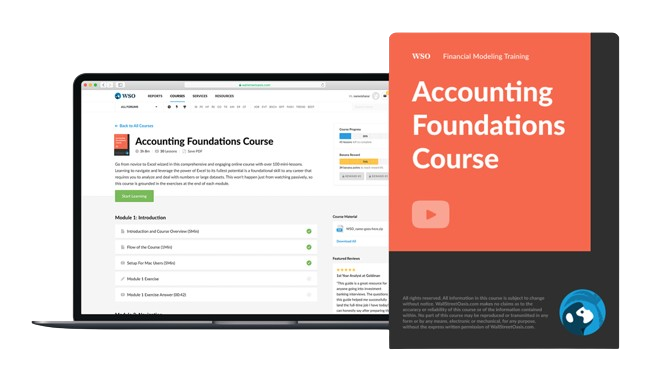Modified Accrual Accounting
A different bookkeeping technique which combines accrual and cash-based accounting.
What Is Modified Accrual Accounting?
A different bookkeeping technique, modified accrual accounting, combines accrual and cash-based accounting. With a few exceptions, it records expenses when obligations are incurred and acknowledges revenues when they are quantifiable and accessible.
Modified accrual accounting is a government accounting method that combines cash and accrual principles, used to track short-term financial activities.
Governmental organizations frequently employ modified accrual accounting. It combines accrual-based accounting with cash-based accounting. This accounting method combines the ease of cash accounting with accrual accounting, a more complex capacity to reconcile associated revenues and costs.
Whether long-term or short-term assets, this accounting draws components from cash and accrual accounting; although public firms do not permit this accounting approach, it is commonly used by government organizations.
Key Takeaways
- Modified accrual accounting blends elements of cash and accrual accounting, commonly used in governmental organizations to track short-term financial activities.
- It records expenses when obligations are incurred and recognizes revenues when they are quantifiable and accessible, offering a balance between cash-based simplicity and accrual-based precision.
- Unlike generally accepted accounting principles (GAAP) for public firms, modified accrual accounting is permitted and widely used in government accounting.
- The method categorizes economic events as short-term or long-term, handling each differently in terms of revenue recognition and expenditure recording.
Understanding Modified Accrual Accounting
This accounting is not permitted under generally accepted accounting principles (GAAP) or International Financial Reporting Standards (IFRS) for public firms (GAAP).
Therefore, analyzing how the function affects conventional bookkeeping techniques is crucial to comprehend how modified accrual operates. When money is exchanged, transactions are recorded using the cash basis of accounting.
Revenue is not recorded until payment has been received, and expenses are not recorded until they have been paid. It implies that until the cash transaction has happened, future liabilities or anticipated incomes are not reported in financial accounts.
Note
Modified Accrual Accounting combines elements of both cash-basis accounting and accrual accounting. It allows for the recognition of certain revenues and expenses on an accrual basis while maintaining a focus on cash flow management.
Contrarily, accrual accounting records income when a legal obligation is established and recognizes costs as they are incurred, regardless of the charges' payment status.
This signifies that the business has performed its duty and gained the right to collect, such as when the product is transported, or the job is finished.
Whether assets are long-term, like fixed and long-term debt, or short-term, such as accounts receivable (AR) and inventories, modified accrual accounting draws components from cash and accrual accounting.
Basic Rules of Modified Accrual Accounting
The benefits of the cash and the accrual methods are combined in this accounting. Revenues and costs are recorded when cash is received or paid under the cash method of accounting.
When goods or services are supplied, revenues are recorded when they are generated, and costs are recorded when they are spent, according to the accrual approach (products are consumed).
Short-term and long-term events are distinguished in modified accrual accounting and are recognized in various ways.
Short-Term Events
To record short-term occurrences, modified accrual accounting is used alongside cash-basis accounting.
The balance sheet's short-term assets are account receivables, inventories, and payables. The affecting economic events are viewed as short-term occurrences.
When the cash balance changes, the occurrences are recorded. As a result, virtually all items on the income statement are reported using cash-basis accounting. The balance sheet no longer includes short-term assets and liabilities.
Modified Accrual Accounting often requires budgetary comparison reporting, where actual revenues and expenditures are compared to budgeted amounts. This allows for effective monitoring of budget performance and accountability to stakeholders.
Long-Term Events
Long-term assets and liabilities include fixed assets (PP&E) and long-term loans. Long-term economic events, as opposed to short-term ones, impact the items or span more than one accounting period.
Long-term events are handled similarly to short-term ones in modified accrual accounting. The balance sheet includes long-term assets and liabilities. Depreciation, amortization, and debt repayments are reported throughout the assets' and loans' lives.
Modified accrual accounting differs from full accounting when recognizing the current share of long-term debt. The part is recognized in the period and value incurred under full accrual accounting.
The present part of long-term debt is recognized when it matures under modified accrual accounting. It can also be reported up to the point of liquidation using accessible, squanderable cash resources.
Revenues And Expenditures
When revenues are available and may be expected, they are recorded using this accounting. When revenues can cover the immediate expenses that must be paid within 60 days, they are accessible.
Similar to accrual accounting, expenses are recorded. Regardless of when the cash payments are made, they are recorded in the period they are incurred.
In modified accrual accounting, several things have new names. For instance, net income is referred to as an excess or a deficit, while costs are referred to as such.
Cash Accounting Vs. Accrual Accounting Vs. Modified Accrual Accounting
With cash accounting, expenses are reported in the time that they are really paid, and payment receipts are recorded in the period that they are received.
A business can record revenue before getting paid for goods or services sold and record expenses as they are spent by using accrual accounting, a type of financial accounting.
Modified accrual accounting is an alternate bookkeeping technique that combines accrual basis accounting with cash basis accounting. Some of the differences are:
| Comparison Terms | Cash Accounting | Accrual Accounting | Modified Accrual Accounting |
|---|---|---|---|
| Timing of Revenue and Expense Recognition | Recognizes revenue and expenses only when cash is received or paid. | Recognizes revenue when earned and expenses when incurred, regardless of cash flow. | Recognizes revenue when measurable and available for spending, and expenses when incurred and due. |
| Complexity and Accuracy | Simple to understand and implement but may not accurately reflect financial performance. | More complex but provides a more accurate representation of financial performance. | Strikes a balance between simplicity and accuracy, particularly suitable for governmental and non-profit organizations. |
| Financial Statement Preparation | Financial statements primarily based on cash transactions. | Financial statements reflect both cash and non-cash transactions, providing a comprehensive view of financial activities. | Similar to accrual accounting but with adjustments to accommodate specific organizational needs or regulatory requirements. |
| Use in Different Industries | Commonly used by small businesses, freelancers, and sole proprietors due to its simplicity. | Widely used in most industries, particularly in larger businesses and publicly traded companies. | Predominantly used in governmental, non-profit, and public sector organizations to align with budgetary control and regulatory compliance. |
| Budgetary Control | Limited budgetary control as it focuses solely on cash transactions. | Allows for better budgetary planning and control by recognizing revenues and expenses when they are earned or incurred. | Balances budgetary control with accrual accounting principles, providing a framework for effective financial management in government and non-profit sectors. |
Note
Modified Accrual Accounting is often used in governmental accounting due to its emphasis on budgetary control. It allows governments to monitor and control spending within a specified budget period by recognizing revenues and expenditures when they become measurable and available for spending.
Modified Vs. Full Accrual Accounting
Let us see some of the differences in the table below:
| Comparison Terms | Modified Accrual | Full Accrual |
|---|---|---|
| Accounts Payable | Recorded in the fiscal year in which the agency incurs the liability in the absence of a pertinent change. | Payments should be recognized when the agency incurs the responsibility in the fiscal year. |
| Prepaid Items | Under GAAP, both purchasing technique and consumption approach are optional in Modified Accrual Basis of Accounting. However, agencies must use the consumption technique as mandated by the Comptroller's office in the AFR. When an item is purchased, it's considered an asset, but once utilized or consumed, it's recorded as a cost. | Consumption method: When an item is bought, it becomes an asset, and when it is utilized or consumed, it becomes a cost. |
| Long-Term Liabilities – Current Portion | Recognize the liability when it becomes due or to the degree that it is anticipated to be settled using readily accessible, disposable funds. | The liability should be recognized when the agency incurs the responsibility in the fiscal year. |
| Long-Term Liabilities – Noncurrent | The portion that does not meet the criteria for recognition as a current liability is a noncurrent long-term liability. | The liability should be recognized when the agency incurs the responsibility in the fiscal year. |
| Revenues | When cash is received at or shortly after the conclusion of the fiscal year, when it is earned, measured, and available, government funds recognize revenues (within sixty days). | Recognize the revenue during the fiscal year that is quantifiable and earned by the agency. A factor is not availability. |
| Expenditures | Spending is recorded in the fiscal year it is made or when it is subject to accrual if there is no appropriate change. Accruals are recorded when expenses are anticipated to consume finite financial resources. | The fiscal year the agency incurs an obligation is when fund expenditures are recorded. To make sure the matching principle is applied, adjustments could be required. |
| Inventories | Under GAAP, both purchasing technique and consumption approach are optional in Modified Accrual Basis of Accounting. However, agencies must use the consumption technique as mandated by the Comptroller's office in the AFR. Inventory is treated as an asset when bought and recorded as a cost when used or consumed. | Consumption method: When inventory is utilized or consumed, it is recorded as an expense rather than an asset. |
| Claims & Judgments | Recognize a responsibility to the degree it can typically be satisfied from disposable financial resources. | The liability should be recognized when the agency incurs the responsibility in the fiscal year. |
Conclusion
Modified accrual accounting serves as a flexible and pragmatic approach for governmental organizations to manage their financial activities effectively.
By combining the advantages of both cash and accrual accounting, it offers a nuanced perspective on revenue and expenditure management, crucial for short-term financial planning and reporting.
While not recognized under GAAP for public firms, modified accrual accounting remains a cornerstone of governmental accounting practices, enabling efficient tracking of fiscal responsibilities and resources allocation.
The nuanced nature of modified accrual accounting allows for a comprehensive understanding of short-term financial activities, providing governmental organizations with the tools to navigate budgetary constraints and optimize resource allocation.
By leveraging this hybrid approach, governments can maintain fiscal discipline, transparency, and accountability, ultimately fostering sustainable financial health and service delivery for their constituents.
Free Resources
To continue learning and advancing your career, check out these additional helpful WSO resources:




or Want to Sign up with your social account?